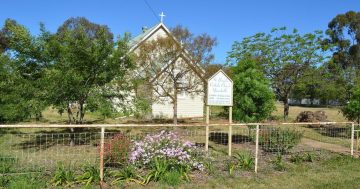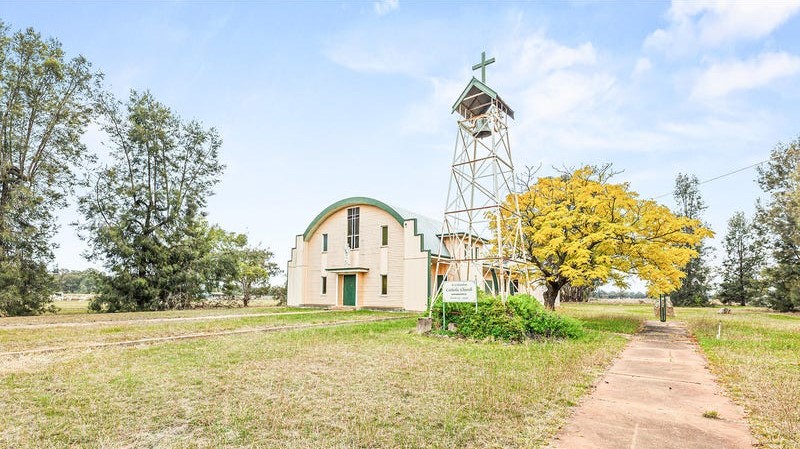
St Columba’s Catholic Church in Bribbaree. Photo: Flemings Real Estate.
The Catholic Church in Bribbaree – west of Young – is now inviting buyers who, in return, would become proud owners of a building with remarkable links to a Rat of Tobruk.
Recently placed on the market by the Catholic Archdiocese of Canberra and Goulburn, the uniquely cylindrical post-war St Columba’s Catholic Church, sits in stark contrast with the surrounding buildings in the small village, except perhaps Bribbaree Memorial Hall.
Officially opened in 1962, the church was the second Catholic Church in Bribbaree, the first having been relocated from its bush setting at nearby Milong, by wagons, in 1926 to the more progressive settlement of Bribbaree, much to the ire of those residents who vigorously took up pens to fight its removal.
Construction of the Stockinbingal-Forbes railway line, agricultural development of the Bland, a visionary Father McKenna and four acres donated by the Carr family paved the way to a six-acre development that by the time it was blessed in January 1927, church included, also boasted a presbytery, complete with underground tank, a hall, tennis courts and space for a planned convent.
Time and tide waited for no-one at Bribbaree and within 40 years the local population would outgrow the old Milong church, giving rise to a distinctive and unusual church that now stands in its place.
St Columba’s, the second, was built under the watchful gaze of Reverend Father Owen Thomas Cosgriff who had served with distinction as a chaplain with the 2/4th Australian General Hospital in the Second World War, notably part of a defiant garrison at Tobruk who, over eight months, held off German and Italian forces in 1941.
Amid tank attacks, artillery barrages, and daily bombings, the Australian contingent endured the desert’s searing heat, the bitterly cold nights, and hellish dust storms living in dugouts, caves, and crevasses.
Their determination, bravery, and humour, combined with the aggressive tactics of their commanders achieved lasting fame as the “Rats of Tobruk”.
During the siege Father Cosgriff conducted three masses each Sunday at St Anthony’s in Tobruk despite the constant air raids by the German Stukas, only moving the services after the engineers deemed the church unsafe.
He would later tell The Canberra Times how the Germans found out the time of mass on a Sunday and accordingly sent over planes to bomb the church.

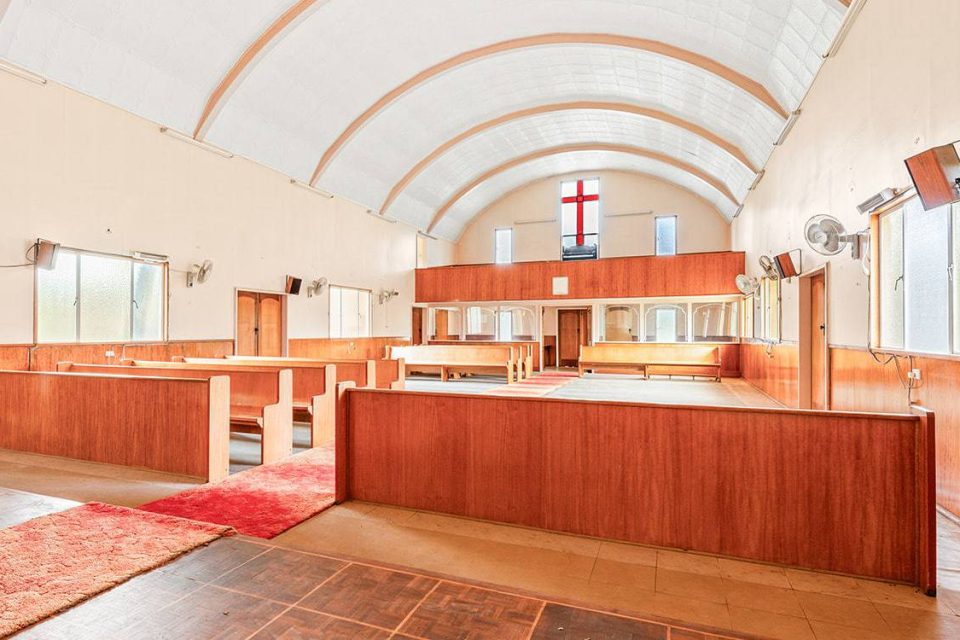
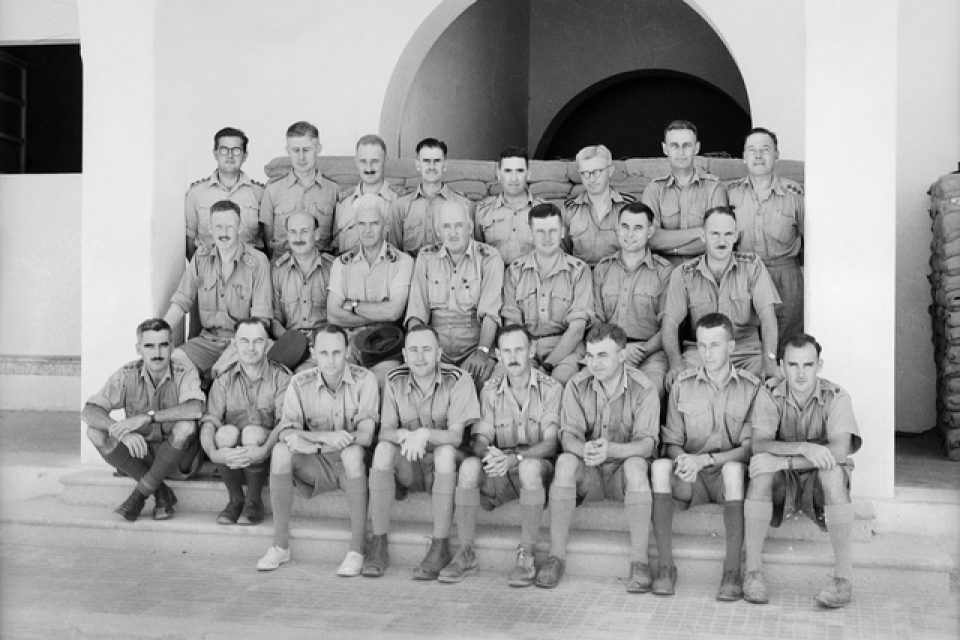
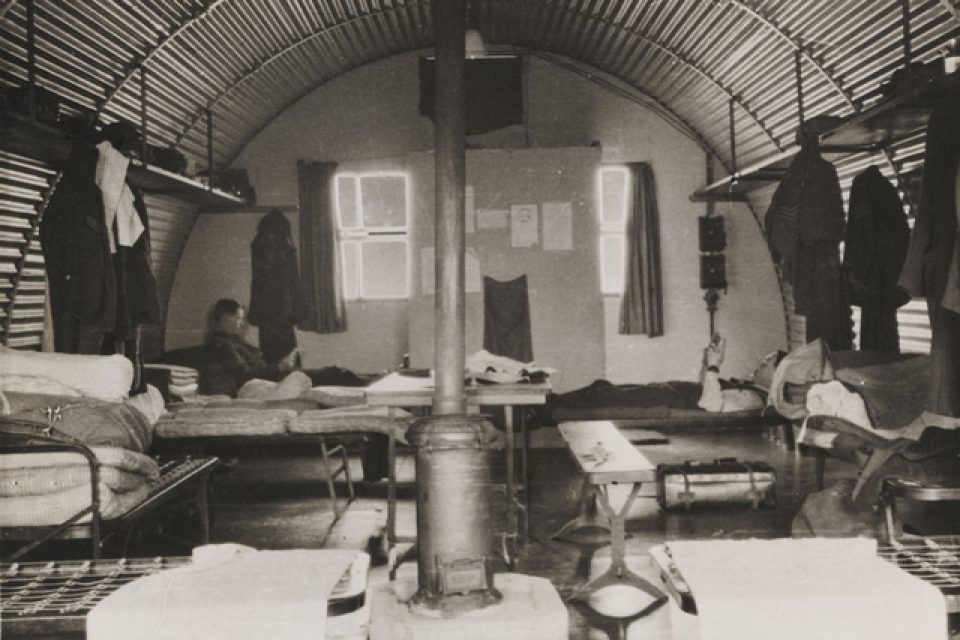


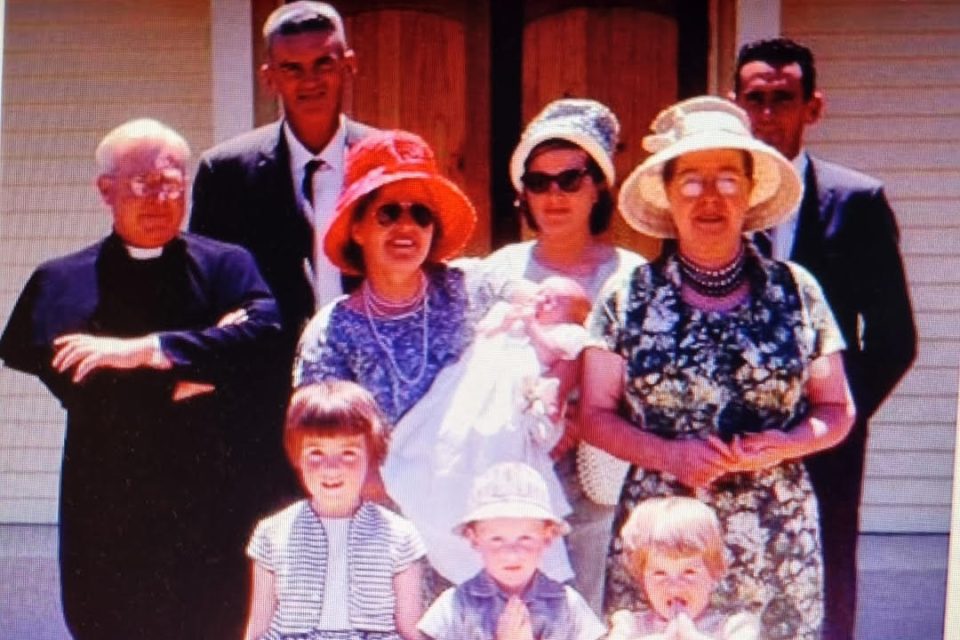
“Not a soldier moved from the church and there was not a single casualty. The following Sunday, the time of mass was changed and the Stukas came and razed the church 30 minutes before the arrival of the priest and troops.”
He was evacuated from Tobruk on a stretcher on 12 October.
The Australian War Memorial houses a collection consisting of Cosgriff’s original handwritten diary for 1941, while serving in Tobruk. Also included is a set of letters (typed from the originals) which Cosgriff sent to his parents during 1941-1942 containing detailed descriptions of events at the front.
Following his return from World War II in which he gave service in the Middle East, Father Cosgriff assisted in Goulburn and Wagga Wagga dioceses and arrived in Bribbaree from Ardlethan in 1961 where he immediately set about building a larger, very distinctive church of rounded concrete featuring, “exterior steel supports with a flying buttress effect”.
Designed by architect Norman Lipman of Young under the direction of Father Cosgriff, in the absence of historic records, there has been some suggestion the post-war St Columba’s was indicative of the Nissen or Quonset-style of building, used during both world wars as churches, bomb and machinery stores, and in post-war migrant camps and accommodation in Australia.
But there was another clue.
St Columba’s took shape after the War Memorial Anglican Church of St James Milvale/Hampstead, 27 kilometres south, opened in 1959.
It too was designed by architect Norman Lipman, and constructed by AG Harris of Young and according to historical archaeologist Ray Hampton Christison, “remains a striking example of an architectural style known as Post-War Ecclesiastical, which strongly reflects the clean and dramatic lines of modern architecture but, in keeping with the desires of clergy and congregation, retains the sense and feel of a traditional church”.
St Columba’s, it could be argued, also bears some resemblance to St Anthony’s in Tobruk.
Five hundred people attended its opening in November 1962, when Father Cosgriff said it was built for the best of all reasons – “the old one wouldn’t hold the crowd”.
Luckily too, because according to the late “Sooty” De Britt, their family of 12 children and the Schiller family of 12 children took up two rows each.
Of note was a timber crucifixion figure carved from one piece of timber by Madame Mimovitch, a Melbourne-based sculptress.
Father Cosgriff would go on to become parish priest at St Bede’s in Red Hill during the late 1960s and early 1970s.
Bimbi-born local historian Margaret Nowlan-Jones remembers him as a man of great faith, loved by his congregation.
That congregation has now diminished so the former St Columba’s Catholic Church, on its one remaining acre, has been reduced to a street address – 6 North Street Bribbaree – and is listed at $290,000.
One month on the market, there has been substantial interest, according to Nick Duff of Flemings Real Estate in Young.
“I think it would suit someone that is interested in owning a part of history but also someone with vision to turn this into a home or an Airbnb setup,” he said.
To learn more about 6 North Street in Bribbaree, contact agent Nick Duff on 0499 556 602.
* Written with thanks to Margaret Nowlan-Jones.







